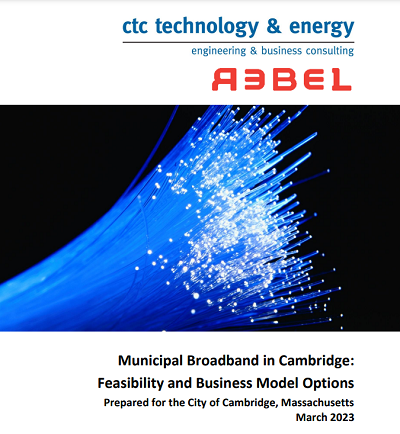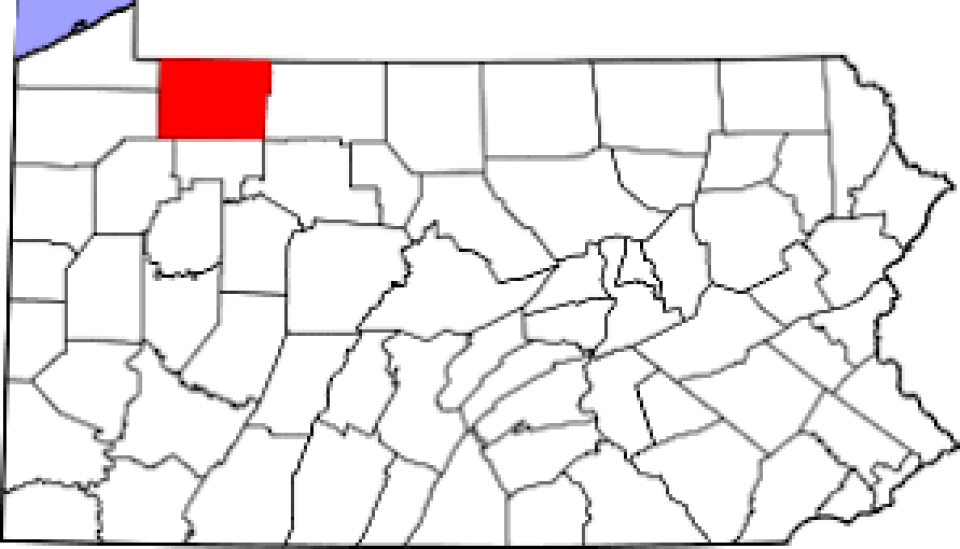
Fast, affordable Internet access for all.

In Cambridge, Massachusetts, digital equity advocates and city leaders have been debating the idea of building a citywide municipal fiber network for years now, mostly over whether the estimated $150 to $200 million it would cost to build the network would be worth it.
In a tech-savvy city, home to Harvard and MIT, the former city manager was resistant to a serious inquiry into municipal broadband. He retired last summer. But before he left, he relented on the broadband question – under pressure from city councilors and a local citizen group advocating for municipal broadband, Upgrade Cambridge.

With many residents weary of being held hostage to the whims and high cost of service from the monopoly provider in town (Comcast), which currently controls 80 percent of the city’s market, in 2021 the city hired the well-regarded Maryland-based consulting firm CTC Technology & Energy to conduct a thorough feasibility study. Now, with a new supportive city manager in office, city leaders have agreed to continue to investigate the options laid out in the recently published study.
‘Significant Public Support’ Even If It Requires Tax Money
The Hudson Clock Tower is the most recognizable landmark in the City of Hudson. The 44-foot tall Romanesque-style brick structure was gifted to the city over a hundred years ago by James Ellsworth, a millionaire who considered it a symbol that the time had come to modernize the city’s infrastructure having “watched the town he had grown up in, fall into disrepair.”
Now, this city in northeast Ohio, 15 miles north of Akron, is reviving the public-minded spirit of Ellsworth as it looks to modernize its telecommunications infrastructure through a public-private partnership that would expand the city-owned municipal fiber network, which now only serves part of the city, to reach all 22,000 residents who call Hudson home.
In mid-October the city issued a Request for Proposals in which “all models of network ownership will be considered (that) may either incorporate the (existing city-owned) Velocity Broadband network within the proposed network or may focus on the development of a network completely independent from Velocity Broadband.”
Proposals from prospective Internet service providers are due by Dec. 2.
Velocity Broadband and Then Some
Velocity Broadband was created in 2015 to primarily serve the city’s businesses. In the years since, the city-owned and operated network began offering residential service to a limited number of homes located along the network’s existing fiber path.
The Hudson Clock Tower is the most recognizable landmark in the City of Hudson. The 44-foot tall Romanesque-style brick structure was gifted to the city over a hundred years ago by James Ellsworth, a millionaire who considered it a symbol that the time had come to modernize the city’s infrastructure having “watched the town he had grown up in, fall into disrepair.”
Now, this city in northeast Ohio, 15 miles north of Akron, is reviving the public-minded spirit of Ellsworth as it looks to modernize its telecommunications infrastructure through a public-private partnership that would expand the city-owned municipal fiber network, which now only serves part of the city, to reach all 22,000 residents who call Hudson home.
In mid-October the city issued a Request for Proposals in which “all models of network ownership will be considered (that) may either incorporate the (existing city-owned) Velocity Broadband network within the proposed network or may focus on the development of a network completely independent from Velocity Broadband.”
Proposals from prospective Internet service providers are due by Dec. 2.
Velocity Broadband and Then Some
Velocity Broadband was created in 2015 to primarily serve the city’s businesses. In the years since, the city-owned and operated network began offering residential service to a limited number of homes located along the network’s existing fiber path.
Today, Velocity Broadband enjoys a 50 percent take-rate as it serves over 450 business and residential subscribers. The network generates nearly $1 million in revenue each year that covers all operating expenses and debt service, leaving the city with an annual net profit of $150,000.
In late August, Warren County Commissioners in northwest Pennsylvania issued a RFP that sought to establish a public-private partnership to bring high-speed Internet connectivity to rural parts of the county near the Allegheny National Forest and River.
County officials are now reviewing proposals for a plan to “design, engineer, procure, install, operate, manage, and maintain high speed Internet to connect and serve the underserved rural areas of the county.” The initiative is part of the county Broadband Task Force’s effort to close the digital divide in a region that is nearly 900 square miles and home to 40,000 residents.
The RFP calls for three required outcomes:
And while the RFP does not specifically require wireless network proposals, the RFP puts its thumb on the scale in favor of proposals that detail a “Primary Wireless Solution.”

The county would own the infrastructure for three years and, during that time, the Internet service provider who wins the bid will pay a rights-of-way agreement for the network, and will be responsible for the management and maintenance of the network. The county is also willing to provide access to its vertical assets to enable the deployment of wireless technology.
The RFP does not specify required subscription costs or low cost options for subscribers but does ask applicants to provide a five-year customer rate table and specifies that they are looking for a project that is beneficial to all parties, including the residents.
Brownsville recently took a Texas-sized step toward the creation of better broadband options for its residents and businesses, as city commissioners voted in late July to enter into a public-private partnership to build a city wide fiber network known as BTX Fiber.
As reported by The Brownsville Herald:
At a Wednesday morning ceremony in city commission chambers, Brownsville Mayor Trey Mendez and Brownsville Public Utilities Board CEO and General Manager John Bruciak signed an agreement with Brian Snider, CEO of Lit Communities, that will allow the fiber infrastructure to be completely built out.
The city commission at its July 19 regular meeting approved the public-private partnership between the city, LIT Texas LLC and its subsidiary BTX Fiber, “for the construction, operations and maintenance of city-wide broadband infrastructure, including but not limited to incorporation and approval of a Right of Way and Encroachment Agreement; Engineering, Procurement and Construction Contract; and Middle Mile Connection Agreement and Grant of Indefeasible Rights of Use Agreement.
Wake up call for Brownsville
From the outside it may seem like an overnight success. But, like most stories, the planning started years ago.
Three years ago, the National Digital Inclusion Alliance (NDIA) ranked Cleveland as the worst-connected city in the United States (with more than 100,000 households).
City leaders are now using its American Rescue Plan funds to make that dishonorable distinction a thing of the past with a plan to invest $20 million to get the “Comeback City’s” digital future rockin’ n rollin’.
Although the city (pop. 383,000), home to the Rock & Roll Hall of Fame, is currently underserved by AT&T, Charter Spectrum, and T-Mobile, earlier this summer the city issued a Request for Proposals (RFP) that “seeks one or more partners” to help bridge Cleveland’s digital divide following a two-phased approach that first addresses the city’s immediate needs before tackling its longer-term strategic goals.
More specifically, the RFP details “the Phase I goals: ensuring that individuals who do not engage online can become full Internet users as quickly as possible, relying on digital adoption and affordable access strategies. (While) the Phase II goals (envision) —ubiquitous fiber optic connections and Smart City deployments.”
Or, as Cleveland Mayor Justin Bibb told Cleveland.com:
The first phase is on making sure on the short-term basis we connect as many families as we can to high-speed broadband, and the second phase will consist of making sure we lay fiber all across the city so we can be competitive, not just five years from now, but 20, 30 years from now, as a city and as a region.
Technically, the RFP that was issued is to fully implement the first phase of the city’s vision and set the table for the second phase. Work beyond the $20 million the city has set aside would require the issuance of a second RFP.
City leaders in Gary, Indiana hope to have people singing a song first sung by the city’s most famous family. But instead of relying on The Jackson 5 to lead a reprisal of “Goin’ Back to Indiana,” the sheet music this time is a plan to “deploy ubiquitous, accessible and affordable high-speed broadband to every home and business within the City.”
Two weeks ago, the city issued a Request for Qualification as it seeks Internet service provider(s) for the city to partner with “to build, operate (and) maintain a government middle mile fiber ring leveraging the City’s ARPA funds and working together to obtain additional State funding to ensure the partner deploys commercial and residential retail broadband.” Bids are due by August 12.
While the city wants to build a fiber intergovernmental network to support the city’s government, the plan calls for a city-wide network “that raises all tides on the residential side. That is essential to Gary’s economic future,” Gary’s Chief Innovation Officer Lloyd Keith explained last week during an information session for potential partners.
The genesis of the proposed project, Keith explained, “came from us looking at a study during the pandemic and the issues we were having with students. We are basically inadequate as far as broadband access is concerned in comparison to other communities. So we looked at how we can go about resolving that situation.”
Despite the presence of AT&T and Comcast, Keith described his city of 67,000 just 30 miles southeast of Chicago as still being “underserved” as was made apparent when the city found numerous census tracts with a staggering number of residents who do not have home broadband service.
That’s why, Keith said, now is the time for Gary to leverage its Rescue Plan funds and the federal BEAD program to finance construction of a network that will cover the entire city.